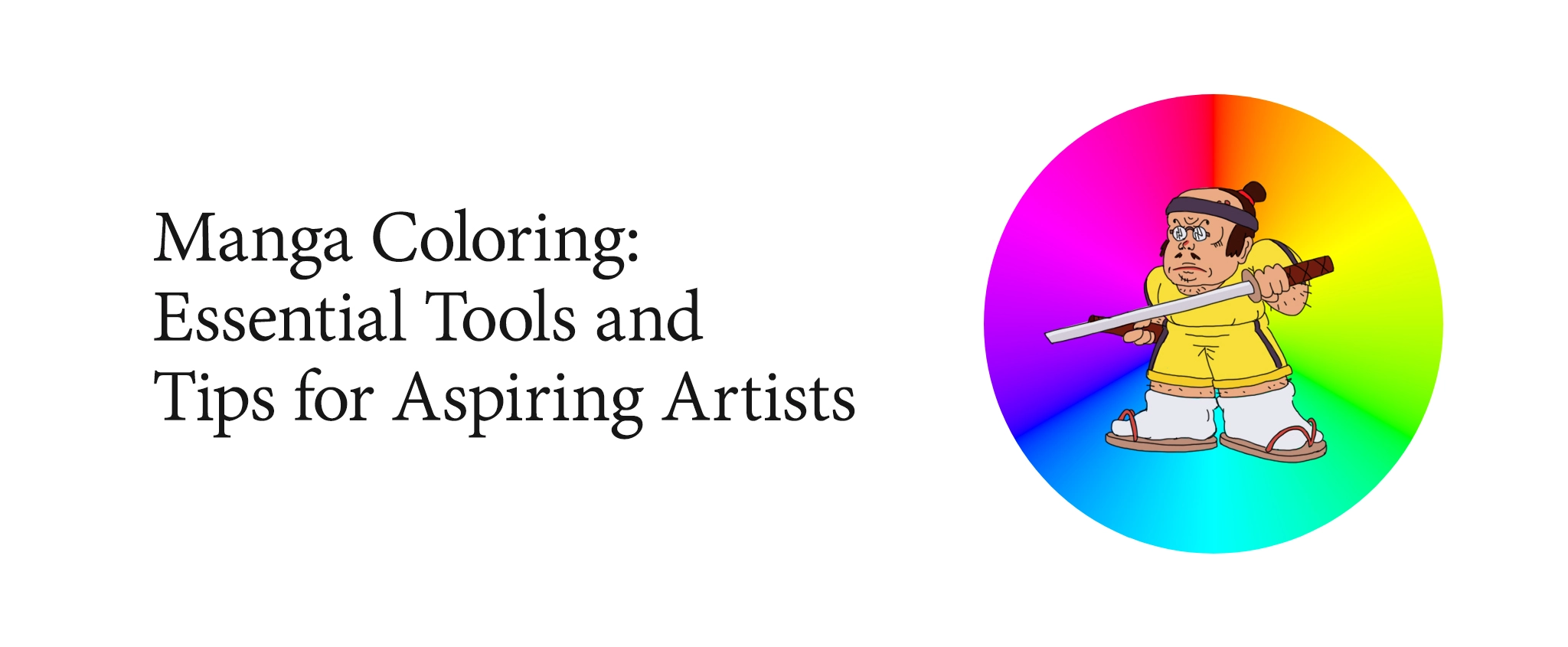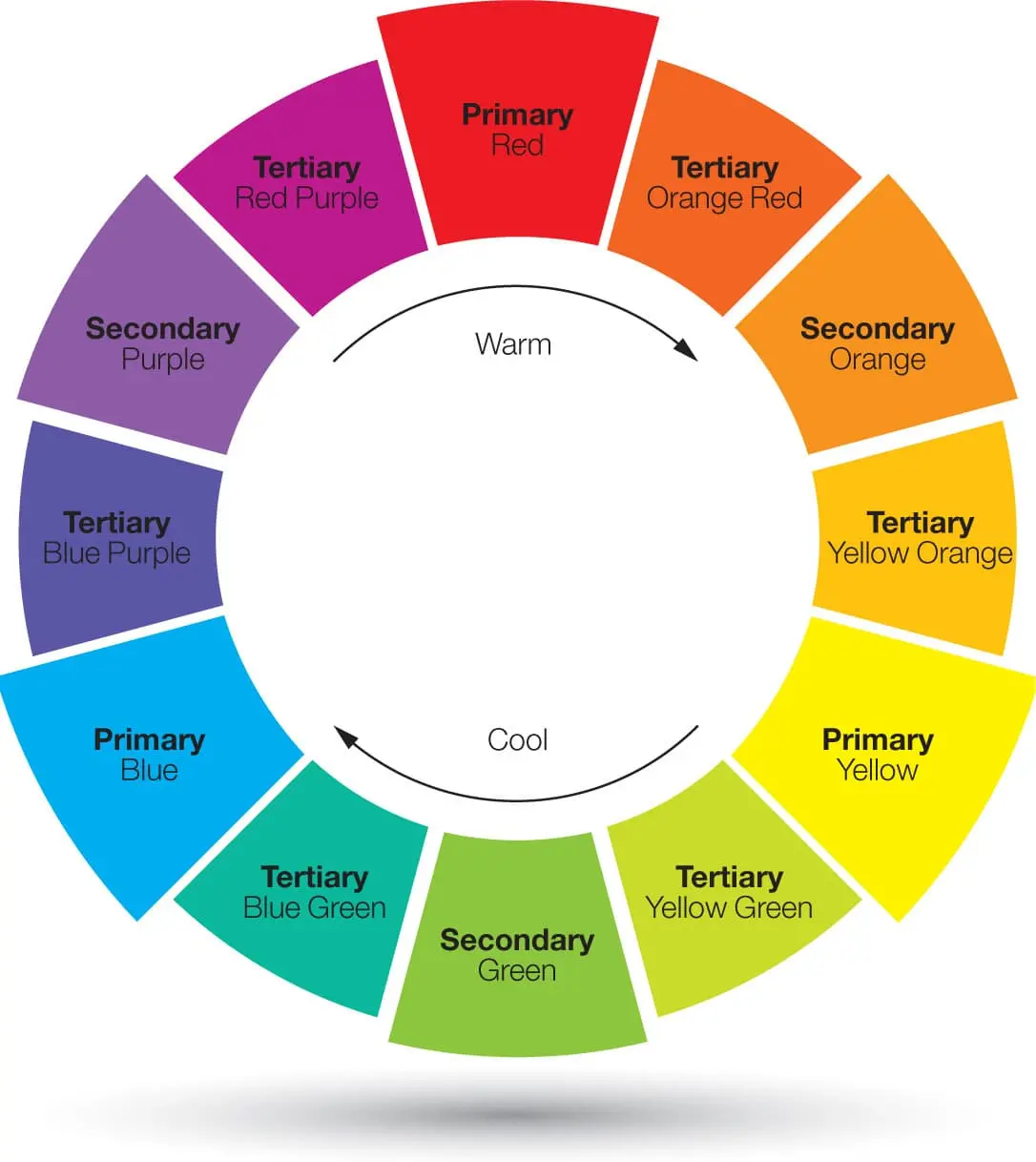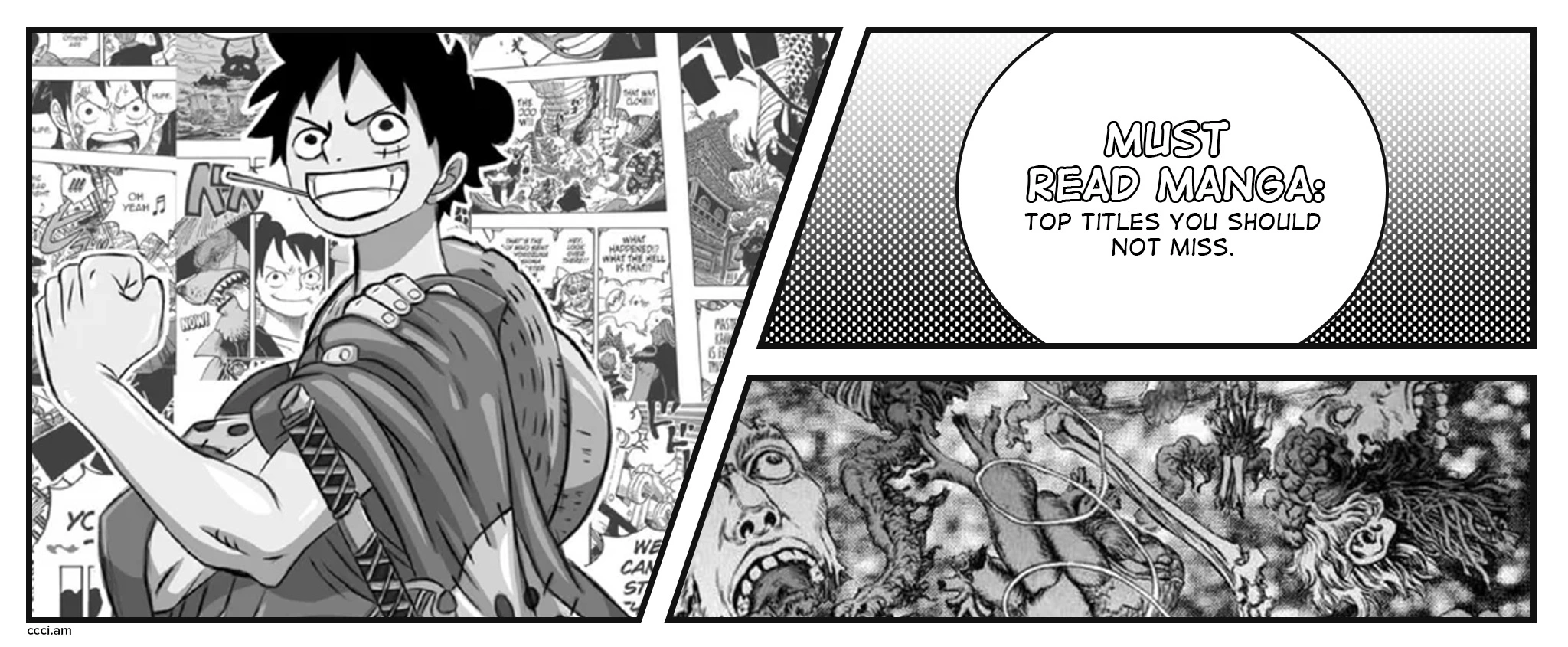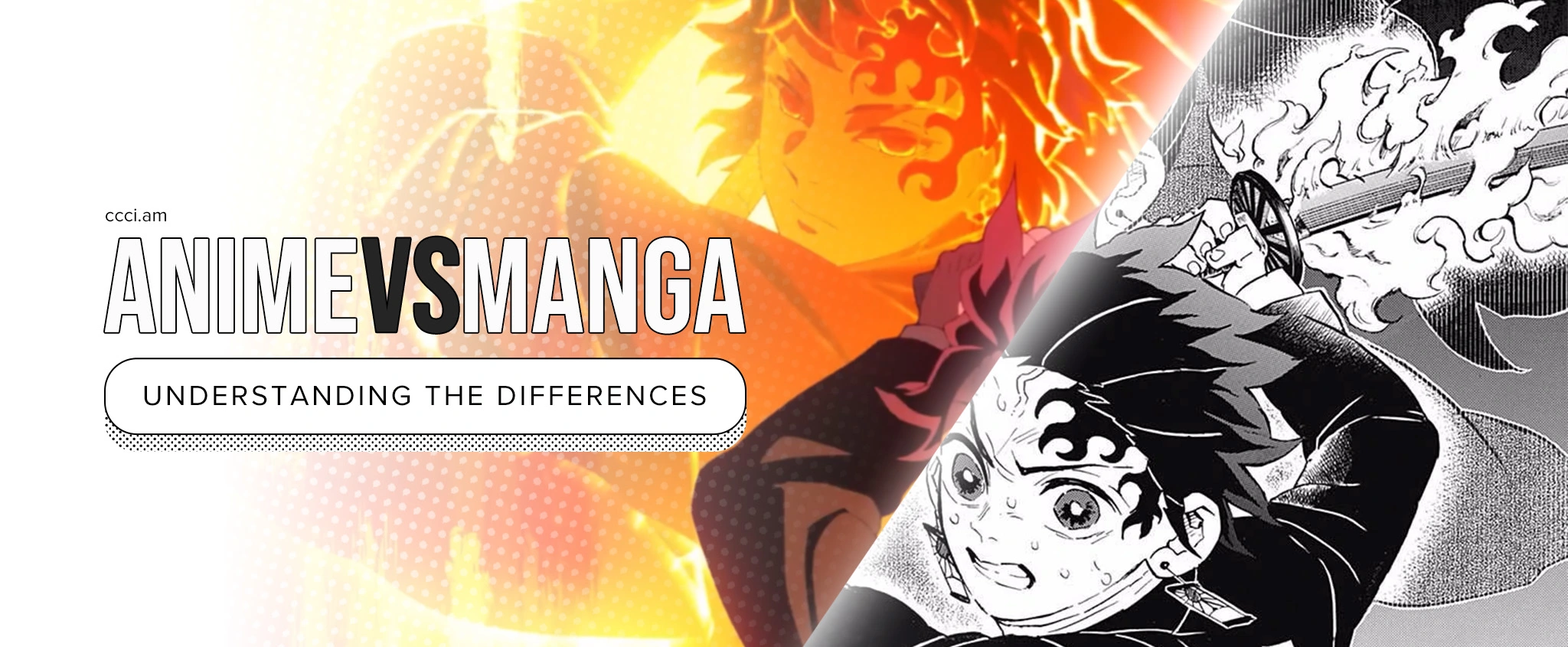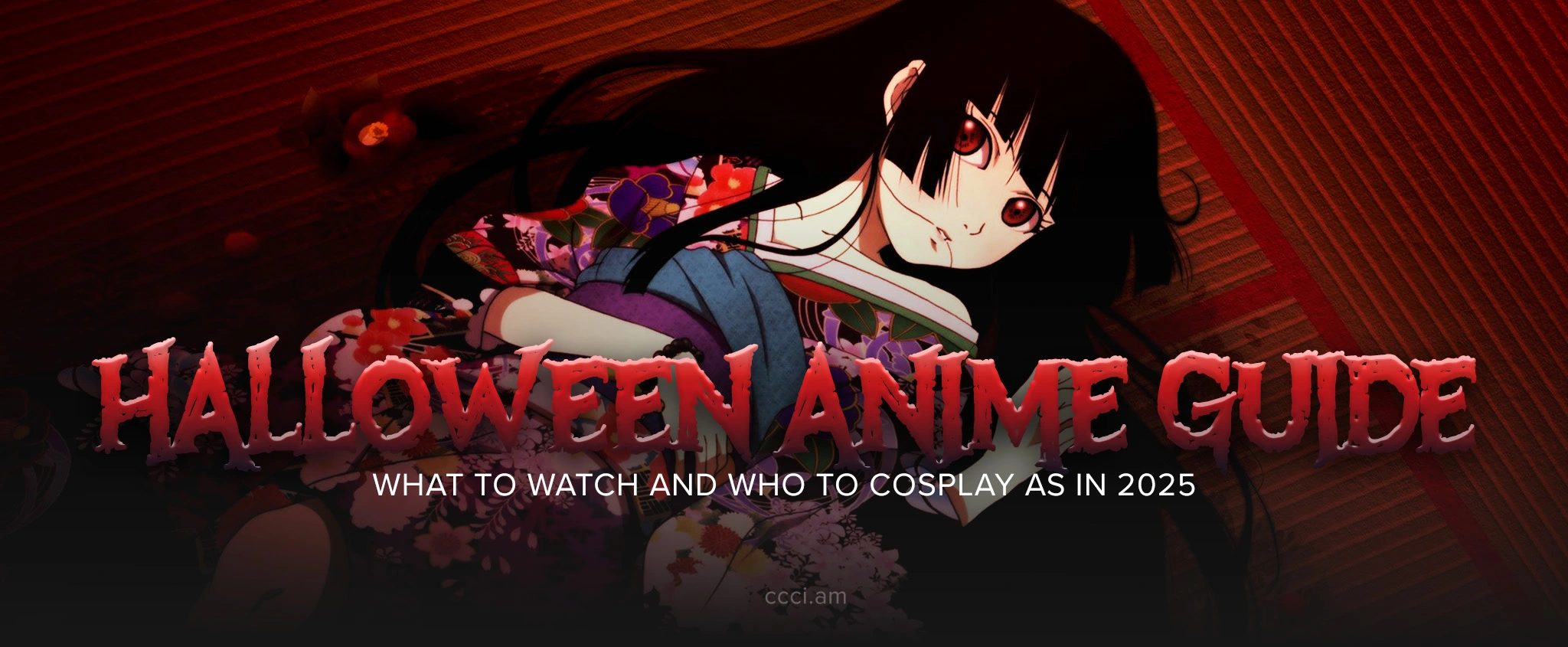Manga Coloring: Essential Tools and Tips for Aspiring Artists
Manga coloring is an exciting way to transform traditional black-and-white illustrations into vibrant, emotionally rich works of art. Whether you’re a seasoned artist or a beginner, learning how to use color can take your manga to the next level. In this step-by-step guide to manga coloring tips and techniques, we’ll walk you through the essentials—from preparing your base artwork to mastering color palettes and applying lighting. Discover how the color wheel becomes your best friend in creating harmony and contrast, whether you’re working digitally or traditionally.
In this article, we’ll share useful manga coloring tips to help you select the right color palette and apply it to create the desired mood for your scenes. We will also show the importance of shadows and light with examples to add depth and dimension to your work. By the end, you’ll have a solid understanding of how to enhance your manga with color, while developing your own unique style.
Key takeaways
- Manga is one of the most popular forms of Japanese art, which has gained recognition worldwide.
- The black-and-white pages of manga traditionally highlight detailed lines and characters’ emotions, but coloring manga opens up new horizons for creativity, adding extra depth and atmosphere.
- In this process, the choice of the right colors and the use of the color wheel play a crucial role.
Here’s a brief overview of how to select a color palette and apply it for coloring manga, as well as how the color wheel helps to create harmonious compositions.
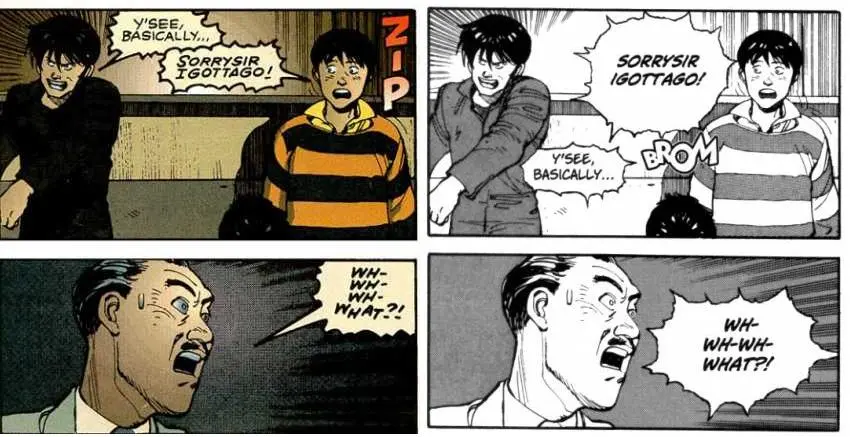
Katsuhiro Otomo – Akira
Note: This is just general information for an overview, and we recommend exploring each point of this article to dive deeper into this fascinating topic.
Why is manga traditionally black-and-white?
Traditionally, manga is created in black and white. This is due to economic and historical reasons, such as lower printing costs and faster publishing processes. The black-and-white style also gives artists more freedom to work with contrast, shadows, and hatching. However, with the development of digital technologies, more manga artists are experimenting with color to add new visual elements to their works.
Steps for coloring manga
- Prepare the base: Start with clean black-and-white drawings. If it’s digital work, you can import scanned images or photos… Or you can just start drawing using a tablet. Make sure the lines are clear and free of unnecessary elements to create a good foundation for adding color later.
- Choose base colors: At this stage, you choose the main colors for the characters, their clothing, and the environment. It is important to consider the character’s personality, emotional state, and the atmosphere you want to create. For example, if the character is experiencing joyful moments, their colors (for example their clothes) might be bright and cheerful, while more serious scenes should use more muted shades.
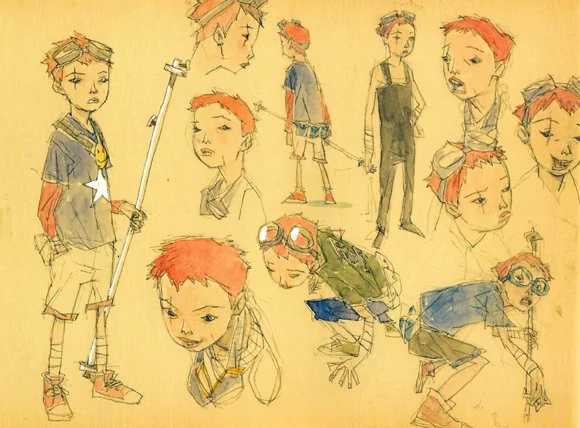
Taiyō Matsumoto – Tekkonkinkreet Concept Art
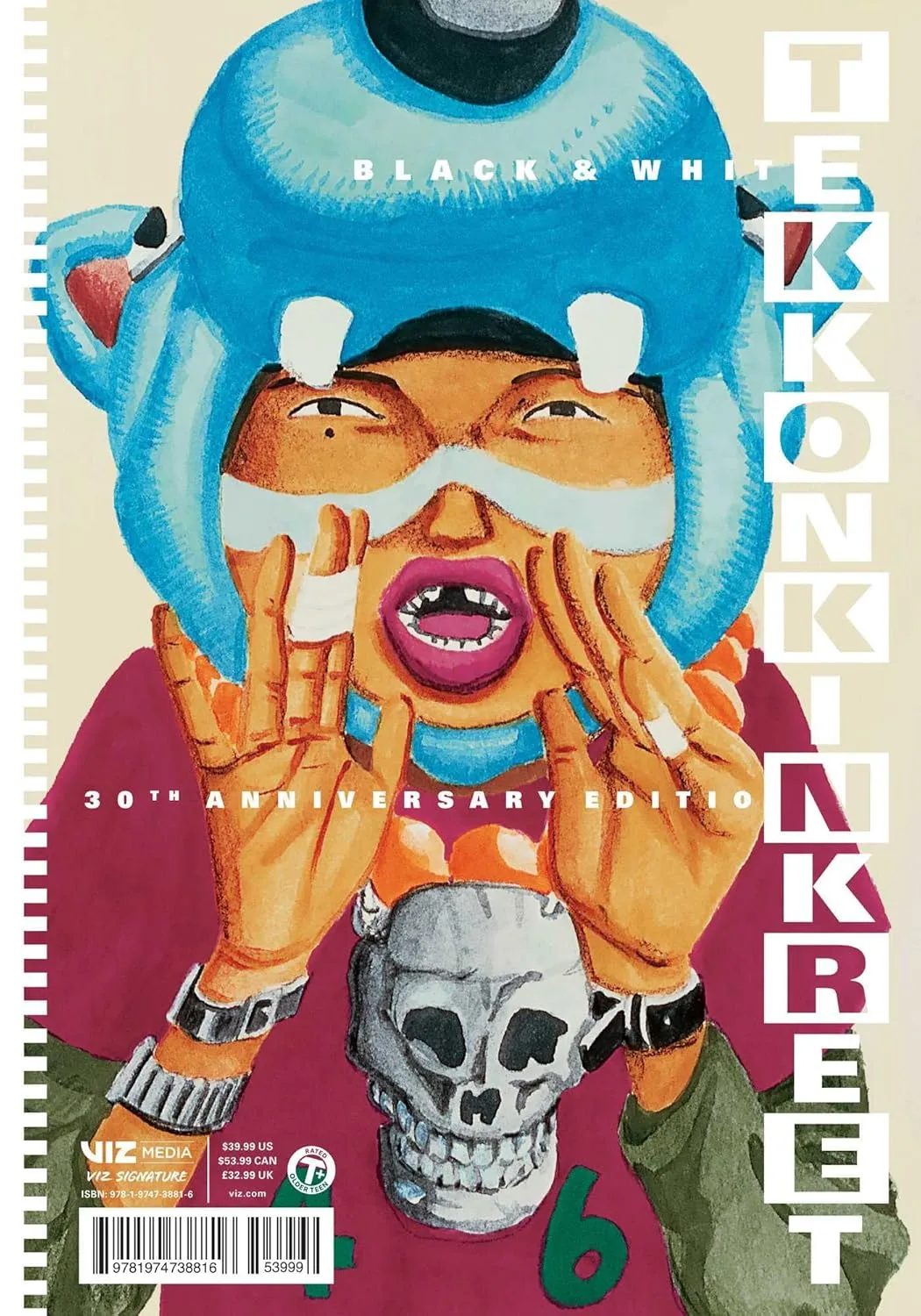
Taiyō Matsumoto – Tekkonkinkreet Manga Cover
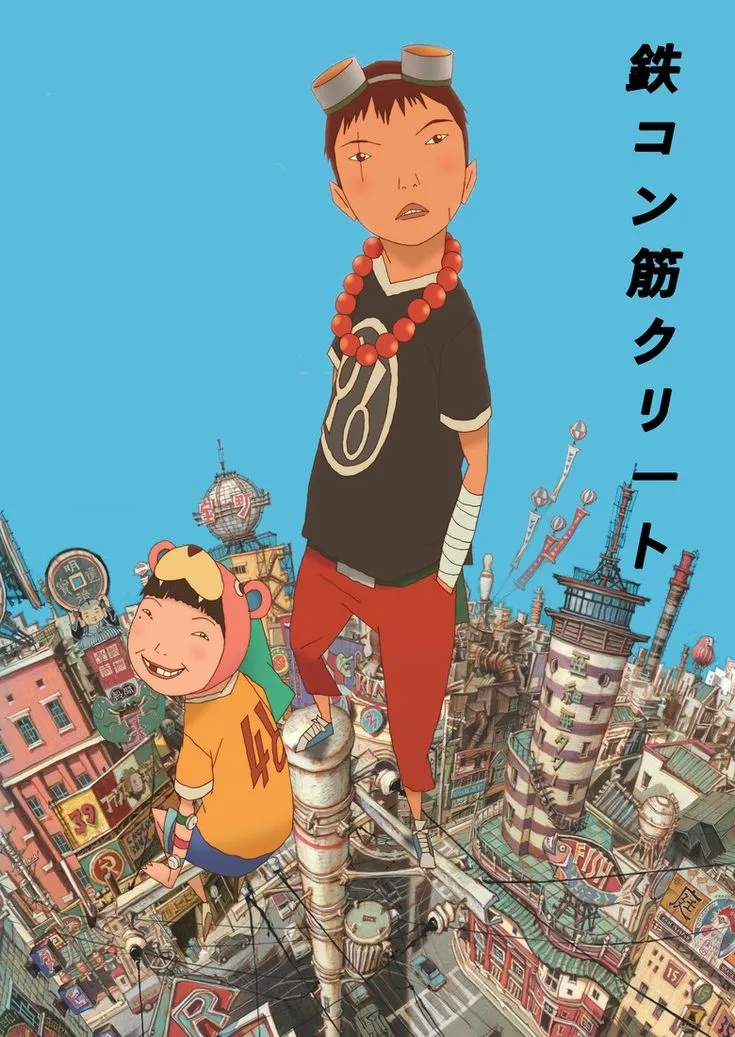
Michael Arias – Tekkonkinkreet Anime Poster
- Color palette: Creating a color palette for manga is a key part of the process. When selecting a palette, keep in mind that color not only serves a decorative function but also conveys emotions and atmosphere. A color palette can be limited (for example, for monochromatic color palettes) or more varied and saturated.
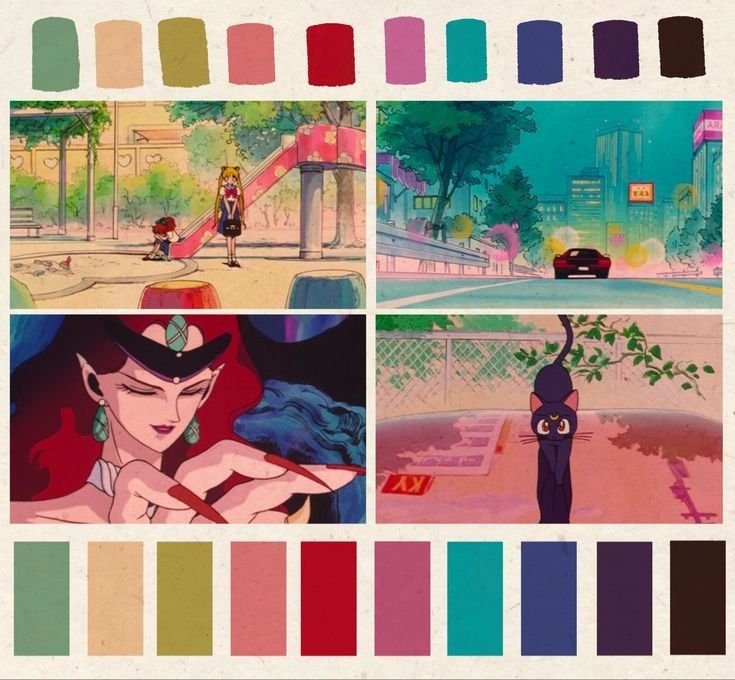
Junichi Sato – Sailor Moon TV Series
- Add shadows and light: To make the drawing look three-dimensional, it’s important to work with shadows and highlights. Using darker shades of color in shadows and lighter shades for highlights helps create a sense of depth and dynamics.
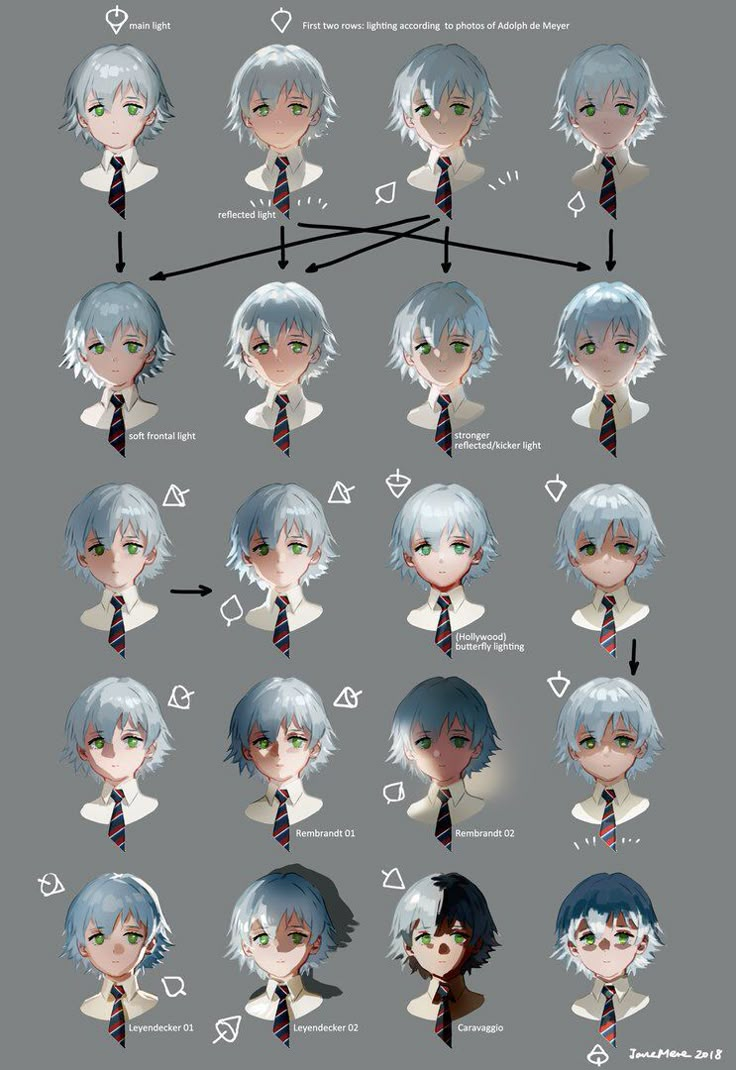
Jane Mere’s Art. IG: @lordjanemere
- Details and textures: At this stage, small details such as hair, clothing, eyes, and background textures are added. These elements give the characters uniqueness and life.
- Work with the background: The background helps emphasize the atmosphere of the scene. It can be simple or complex, but it should always support the overall style of the work so that it doesn’t distract from the main characters.
Color palette and choosing colors
A color palette is a set of colors that an artist uses to create a particular mood and visual harmony. Each color and its combinations contribute to how the scene is perceived. Choosing the right palette helps make the manga more expressive and dynamic.
Types of color palettes
- Monochromatic palette: In this case, only one main color is used in different shades and saturations. This helps create a very harmonious atmosphere, but it can be less expressive if used throughout the entire work. (e.g., flashbacks, love moments, revenge, betrayal, duel, etc.)
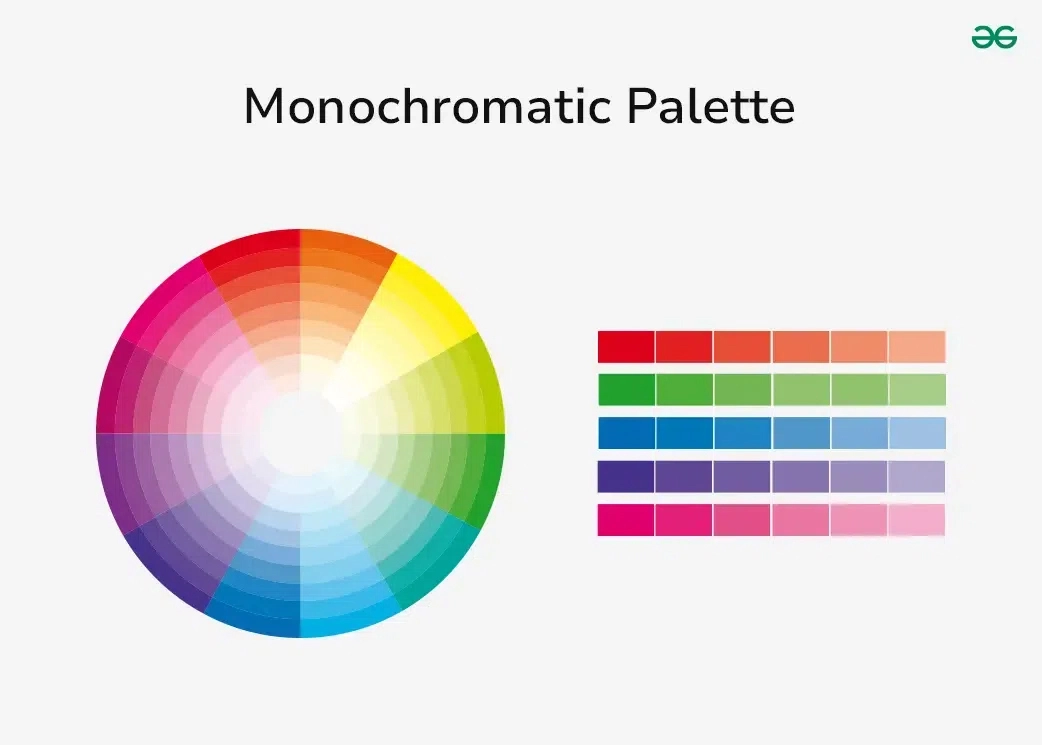
- Analogous palette: This consists of colors that are adjacent on the color wheel (e.g., blue, cyan, and green). It creates smooth, natural transitions and gives a calming effect.
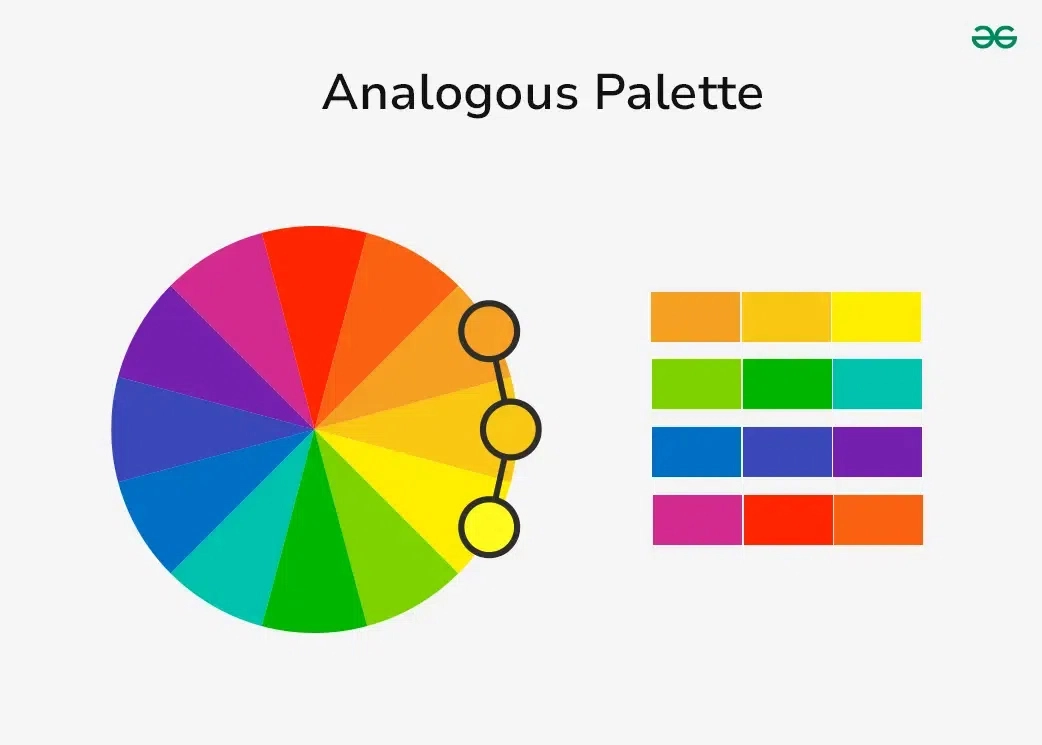
- Complementary palette: This includes opposite colors on the color wheel (red and green, blue and orange). Using complementary colors creates bright contrasts, which draws attention to certain elements of the drawing.
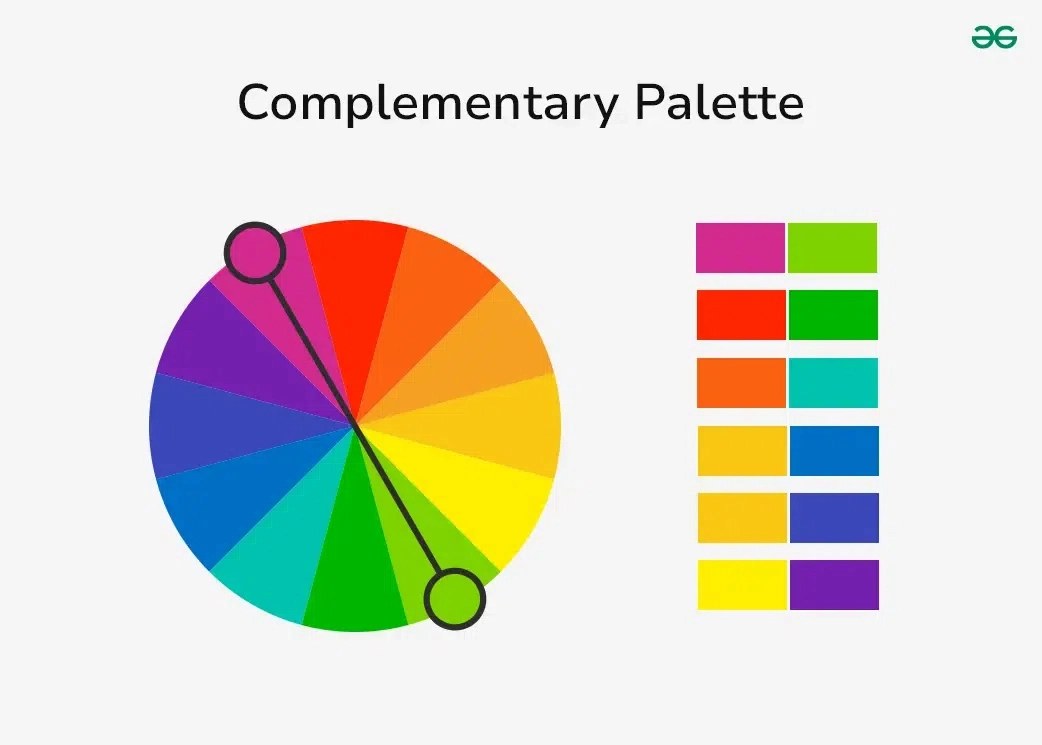
- Triadic palette: This consists of three colors evenly spaced on the color wheel. This approach works well for bright and dynamic images, where it’s important to create balance between different shades.
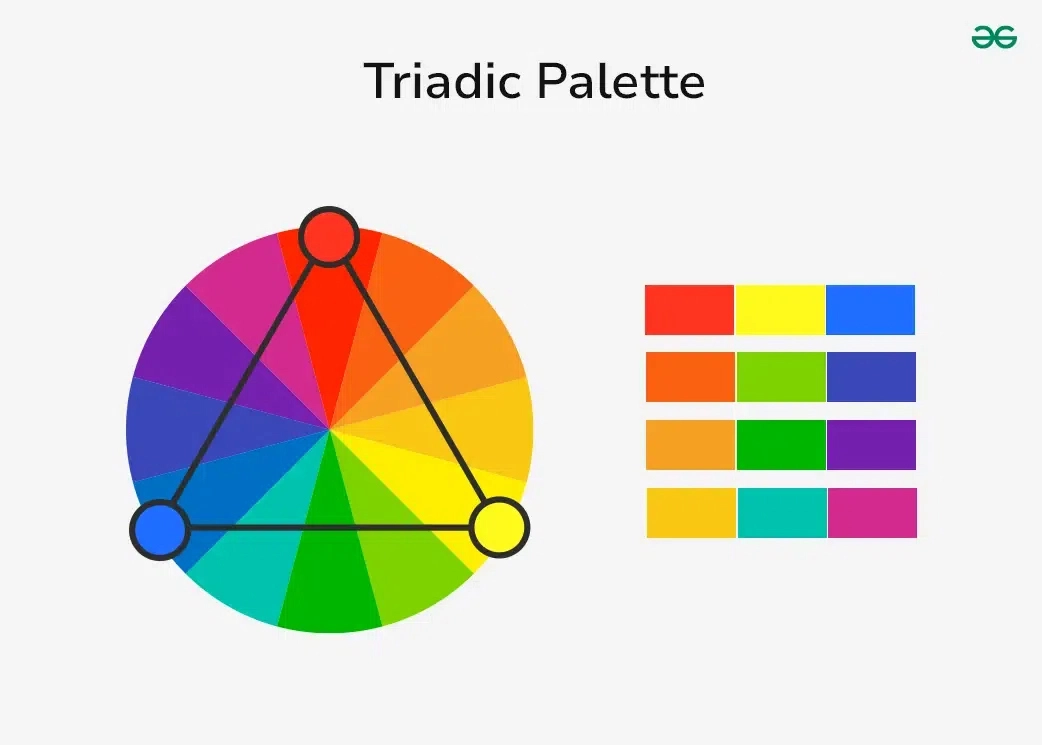
- Tetradic palette: This includes four colors arranged in a rectangular shape on the color wheel. This type of palette allows for using two sets of contrasting colors, creating a more complex composition.
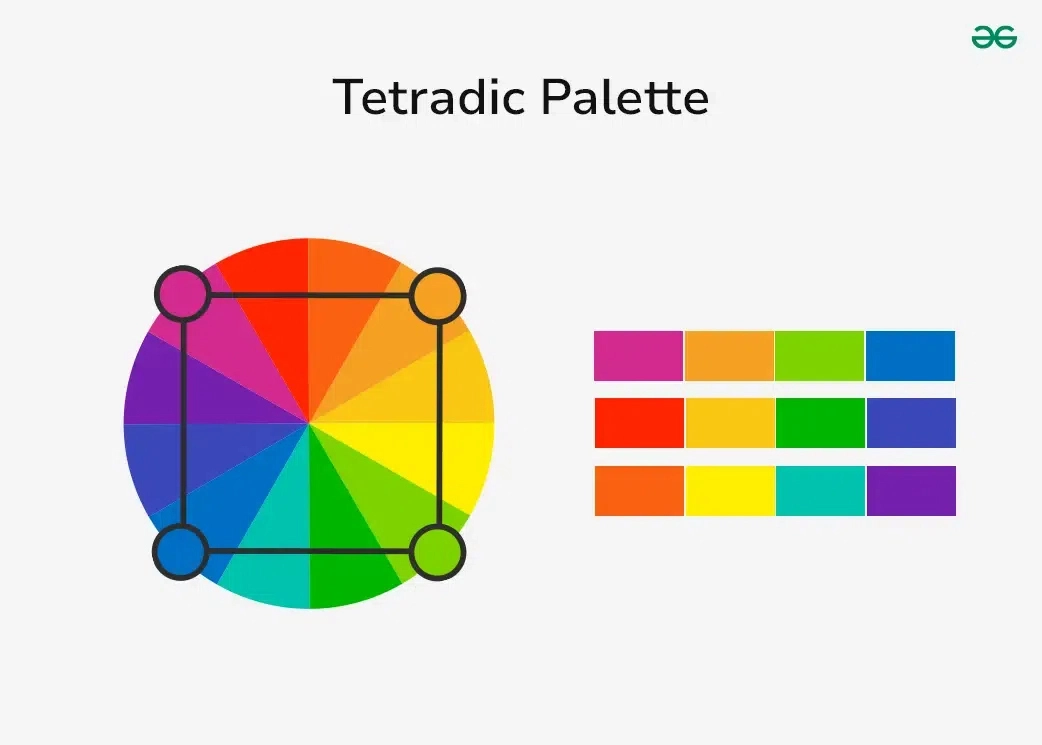
Tips for coloring manga (how to choose a palette for different manga scenes)
- Battle scenes: Bright, saturated colors such as red, orange, and blue highlight the dynamics of the events. The contrast between the bright colors of the characters and the darker background enhances the atmosphere of tension.
- Melancholy scenes: For dramatic scenes, cooler and muted shades like blue, purple, and gray are suitable. This helps emphasize sadness or a dark atmosphere.
- Romantic scenes: Pastel colors such as pink, peach, and light blue create a soft and cozy atmosphere for tender moments.
The color wheel: Your assistant in choosing colors
The color wheel is a tool that helps organize colors and understand how they can combine. It consists of 12 basic colors arranged in a circle, including primary colors (red, blue, yellow), secondary colors (orange, green, purple), and tertiary colors (e.g., red-orange, yellow-green).
Basic principles of working with the color wheel
- Contrast and harmony: Colors that are next to each other on the wheel (analogous colors) create smooth and harmonious combinations, while opposite colors (complementary) enhance contrast.
- Warm and cool colors: Warm colors (red, orange, yellow) evoke a sense of energy and brightness, while cool colors (blue, green, purple) create a feeling of calmness and serenity.
- Color accents: If you want to highlight an important element, use opposing colors. For example, if the character has blue hair, an orange or yellow background will create contrast and highlight them.
- Toning and gradation: To create volume, use lighter or darker shades of the same color for light and shadow.
Another manga coloring tips for beginners
- Work in layers: In digital programs, always work with multiple layers so you can easily edit and change colors or details without affecting the rest of the drawing.
- Use the right brushes: In coloring programs, there are many brushes that mimic traditional techniques (such as watercolor or oil). Choose the appropriate tool for each task.
- Practice: The more you draw and experiment with colors, the better you’ll get at it. Try coloring scenes in different styles and approaches to develop your own vision.
- Study other artists’ works: Don’t hesitate to study the works of manga masters and artists working with color. This can help you learn how to use color in compositions and create visual effects.
Conclusion
Coloring manga is an exciting and multifaceted process that requires not only technical skills but also a deep understanding of how colors influence the perception of the story. The right choice of color palette and the ability to work with the color wheel allow you to create harmonious, expressive, and visually appealing works. By experimenting with colors, trying different palettes and approaches, you can develop your unique style and bring new elements to your creations. This step-by-step guide will give you the foundation needed to bring your manga art to life. Use these manga coloring tips to refine your skills, and explore new ways to infuse creativity and emotion into your work.

